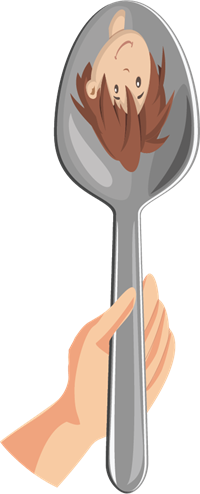PDF chapter test TRY NOW
The majority of the light falling on a highly polished surface, such as a mirror, is reflected. The reflected ray obeys the laws of reflection.
Let us recall these laws,
(i) The angle of incidence is equal to the angle of reflection, and
(ii) The incident ray, the normal to the mirror at the point of incidence and the reflected ray all lie in the same plane.
All types of reflecting surfaces, including spherical surfaces, are subjected to these laws of reflection.
You are probably familiar with how a plane mirror creates an image. What are the image's characteristics?
A plane mirror always produces a virtual and erect image. The image has the same dimensions as the object. The formed image is the same distance behind the mirror as the object in front of it. In addition, the image is inverted laterally.
What would happen if the reflecting surfaces were curved?
Let us take a look at the following activity.
- Obtain a large, gleaming spoon.
- Try to look at your face from its curved side.
- Is the image of your face smaller or larger than usual?
- Slowly move the spoon away from your face.
- Take a look at the image. What happens when it changes?
- Repeat the activity by reversing the spoon.
- What does the image now look like? Compare the image characteristics on the two surfaces.

Curved surface of a shining spoon
The curved surface of a spherical mirror is similar to the curved surface of a shining spoon. The spherical mirror is the most common type of curved mirror. The reflecting surfaces of such mirrors can be considered a part of the sphere's surface. We will discuss about the spherical mirrors in the next section.
